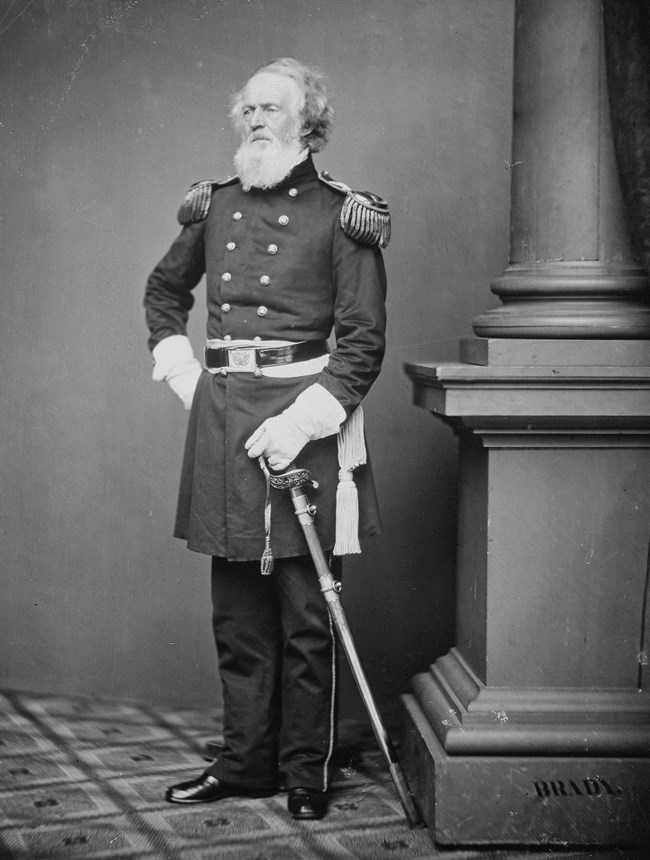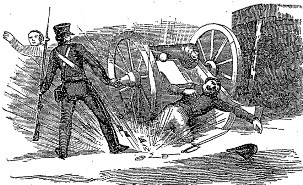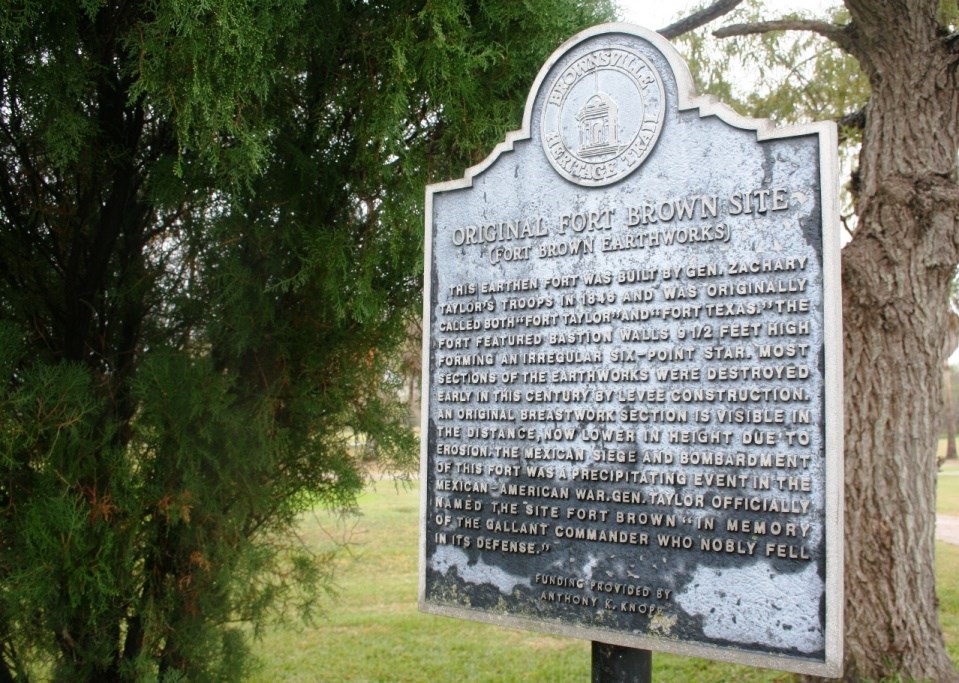
Hlj (public domain) Formidable FortThe site unofficially referred to as Fort Texas was an earthwork, in the rough shape of a six-sided star. Each earthen face of the fort extended from 125 to 150 yards. The walls were 9 feet high and 15 feet wide. A moat 20 feet wide and 8 feet deep circled the exterior. Inside, U.S. troops constructed a number of bomb-proofs and powder magazines to provide shelter from any incoming fire. The Bombardment BeginsGeneral Arista began positioning his artillery and troops around the fort shortly after General Taylor departed the fort on May 1, 1846. On May 3rd at 5 a.m., Mexican artillery opened fire on the fort from positions directly across the Rio Grande.

NPS The WaitThe artillery fire from within the fort decreased as well. Major Brown called for a halt to firing realizing the shots directed on Matamoros were having minimal effect. Over the next several days, U.S. troops conserved their limited ammunition and offered only brief flurries of return fire. Instead they concentrated on shoring up the defenses of their post. Otherwise, the soldiers could do little but wait for General Taylor to march to the rescue. Taylor ReturnsWhen Taylor’s force began its return march, Mexican troops received orders to assist in efforts to halt their advance. Although sporadic artillery fire on the fort continued, much of the Mexican infantry and cavalry surrounding the post had moved forward to join the fighting at Palo Alto and Resaca de la Palma. Commander BrownThough Fort Texas withstood a siege of six days, with periods of heavy cannon fire, casualties were remarkably low. Only two U.S. soldiers died in the bombardment—but that toll included fort commander Jacob Brown. Major Brown was struck in the leg by a cannon ball on May 6th and died on May 9th, just hours before the siege ended. Despite being wounded, Brown helped maintain troop morale throughout the siege. His men renamed the liberated post—Fort Brown—in his honor. The town that grew around the fort would also take its name from the Major and become the city of Brownsville. 
NPS The Fort TodayThe Fort Brown site has suffered the effects of natural and man-made activity in the lower Rio Grande Valley. Although Fort Brown remained an active post until after World War II, the original earthworks were abandoned shortly after the war with Mexico. The Fort Brown site is currently owned and managed by the International Boundary and Water Commission (IBWC). |
Last updated: December 4, 2024
